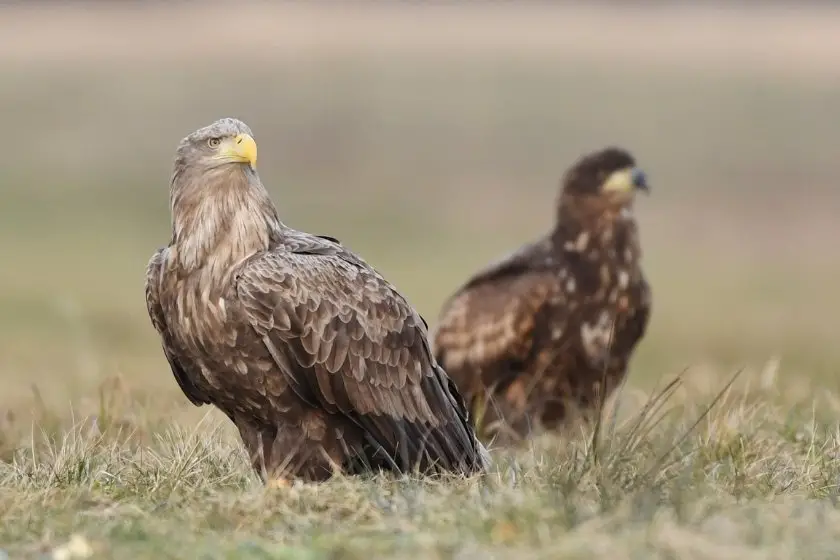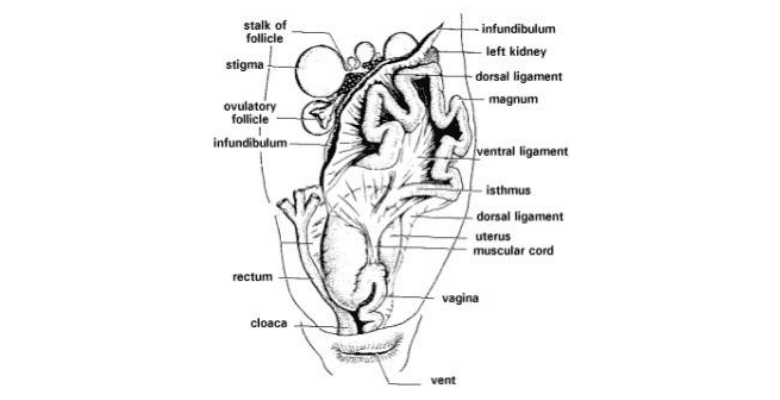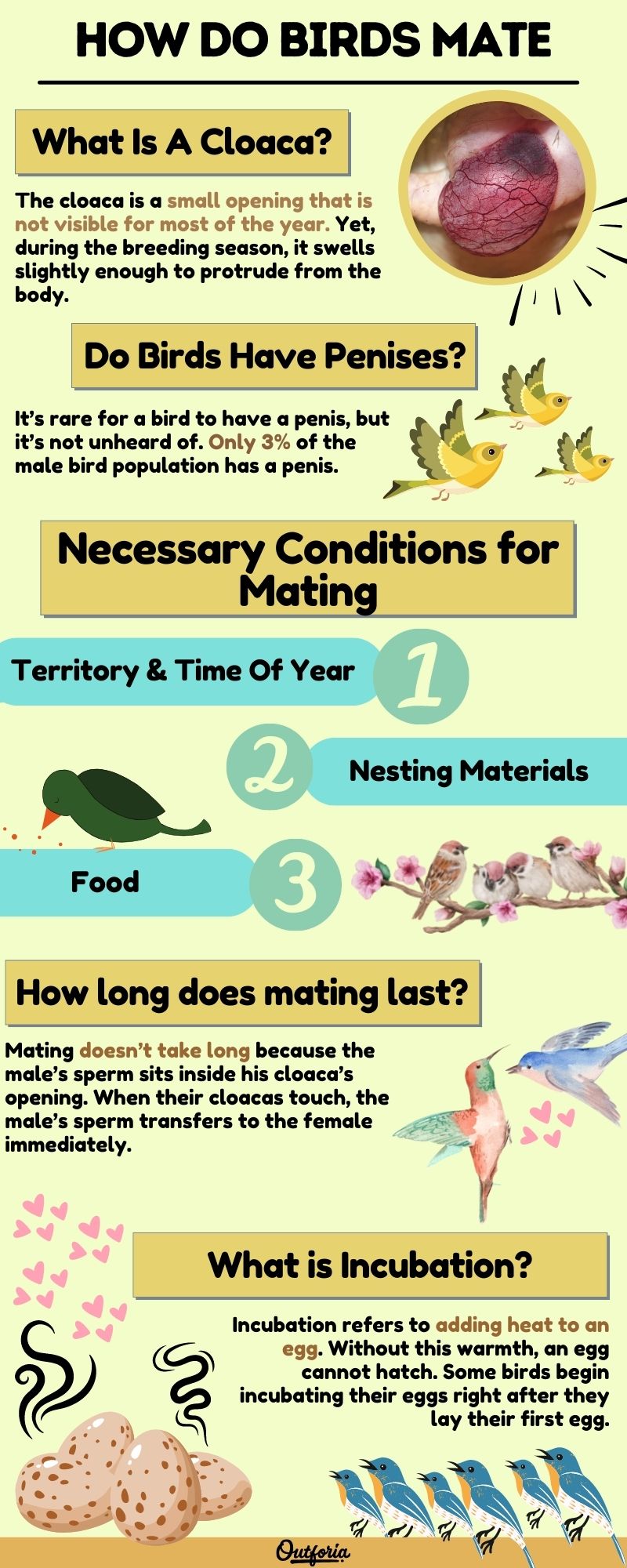Bird Sex & Reproduction
Oooh err missus. Is that 2 shags urm sh*gging?
Joking a part, a great article that explains all the workings but without making it too smutty, well done
Perhaps not surprisingly birds have a very different reproductive system from mammals. Instead of a penis and a vagina most male and female birds both have an internal chamber called the cloaca, sometimes known as the vent. This is used as their digestive and urinary tract as well as for reproduction, so it excretes faeces and urine, and in females it’s also the hole through which eggs are laid.
During most of the year the cloaca is not visible, but during breeding season when birds are feeling frisky it swells and sticks out slightly from of the bird’s body. Their other reproductive organs, the testes and ovaries, will also swell and begin to produce sperm, which is stored in the male’s cloaca prior to mating, and ova which are stored deeper inside the female’s body.
Although some birds can have long and complicated courtship displays and mating rituals the actual sex act is usually over very quickly.
Once a pair bond has formed and the birds are ready to get down to business, they will assume the position with the male bird usually balancing on top of the female. Both birds face the same way and she will crouch or lie down to help the male balance. The male will often stand on the female’s back placing his feet in the shallow indentations just over her wings. He shifts his weight from side to side in a process known as treading. As well as helping him stay balanced the movement from his feet stimulates the female’s ovaries.
The female will move her tail feathers to the side, and he will arch his body so his cloaca can touch hers. Their cloacas briefly rub in what is known as a cloacal kiss. This may only last a second or two but during this time the sperm is transferred to the female’s cloaca and mating is complete, although sometimes the birds remain in position and several more cloacal kisses may occur.
For the next week or so the sex hormone levels in the birds will remain high and they may mate several more times to give them the best chance of reproductive success.
After a successful mating the sperm is stored in the female’s sperm storage tubules for a period of time lasting from just a few days to several months. As eggs are released from the ovaries, or more usually the single ovary, they will be fertilized individually before the shell is calcified and the birds is ready to lay.
Although two ovaries are present in embryonic birds by the time they have reached adulthood only one is functioning, usually on the left hand side. This means birds are only able to produce a few eggs at a time.
Dinosaurs, from which birds are directly descended had two ovaries and laid large clutches so why did modern birds ditch part of their reproductive system, lowering the chances of them successfully producing the next generation?
Evidence suggests that the loss of the ovary was a weight saving tactic which enabled more efficient flight. This in turn would have meant birds could escape from predators more easily as well as find new sources of food and habitats, cancelling out the potentially negative impact on their survival of producing fewer eggs.
However, adult male birds have kept both of their testes so an alternative theory suggests that it is the fragility of the eggshell that led to the loss of the ovary. With two eggs passing through two adjacent oviducts they would have bumped against each other during flight and other activities, possibly cracking or breaking them.
As always, there are some exceptions. Kiwis, for example have two functioning ovaries, and bilateral ovaries have been observed in some raptors.
After a bird has laid her first egg her ovary releases the next ovum and she will lay her second egg usually at the same time the next day. Once all the eggs have been laid she will begin to incubate them sometimes along with the male parent. In a few species such as dotterels and phalaropes, the male does all the incubation himself.
Although 97 percent of birds don’t have penises there are a handful that do. These include waterfowl, tinamous, and the ratites, flightless birds , that include ostriches, emus, rheas and kiwis.
Birds’ penises are different from mammals’ penises; they are an extension of the cloaca and are erected by lymph rather than blood. They are usually partially feathered and sometimes covered with spines or filaments. When flaccid they curl up inside the cloaca, and in some birds barely function at all.
Oooh err missus. Is that 2 shags urm sh*gging?
Joking a part, a great article that explains all the workings but without making it too smutty, well done



